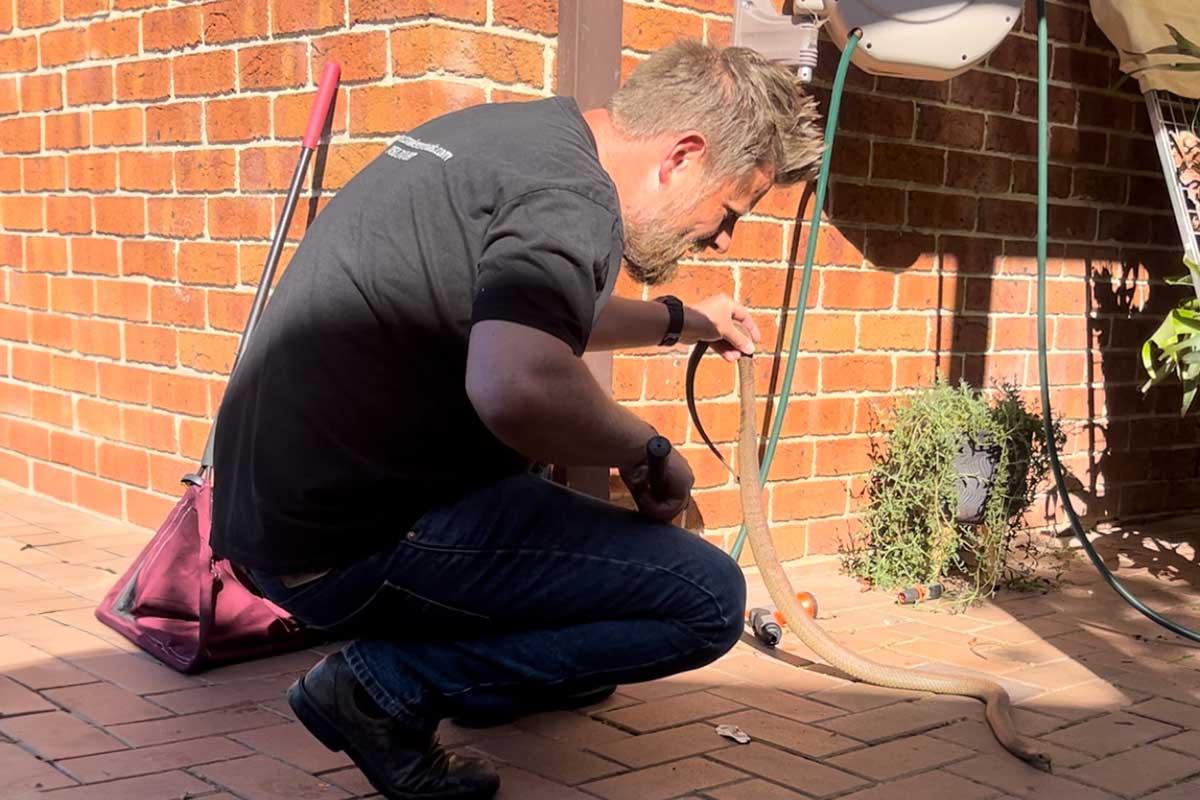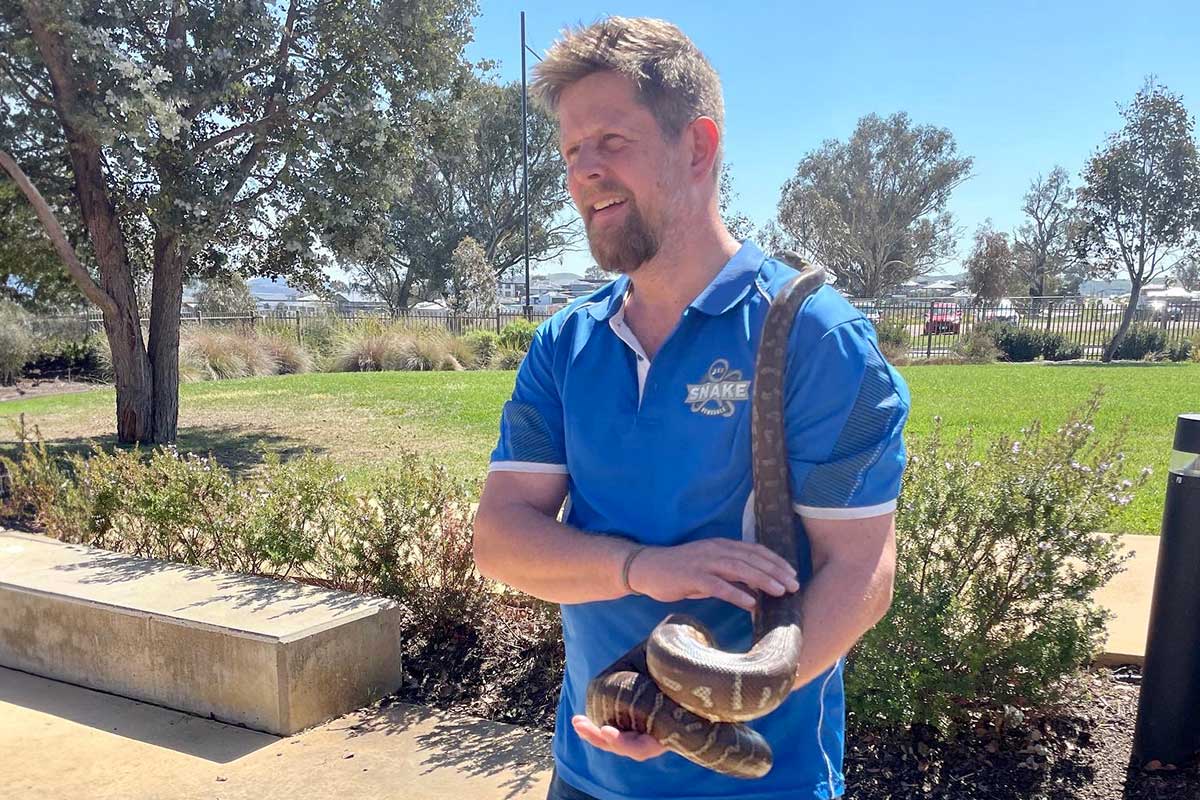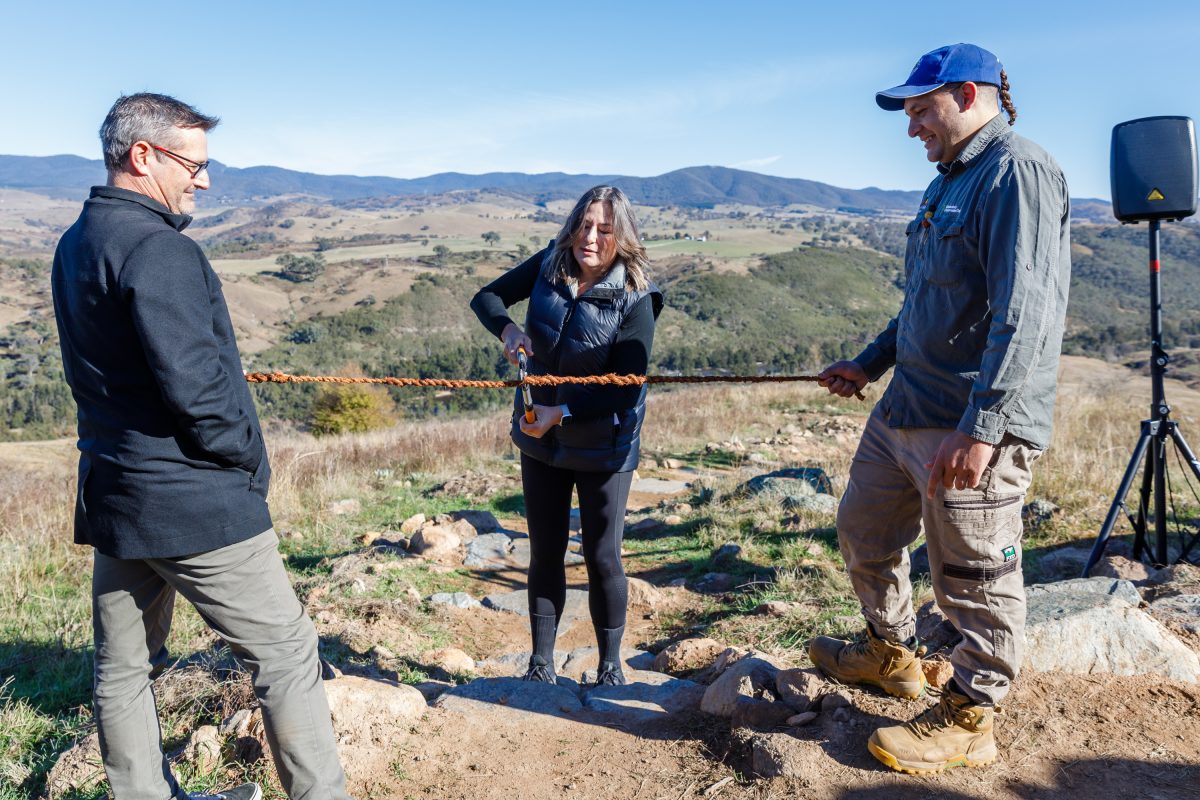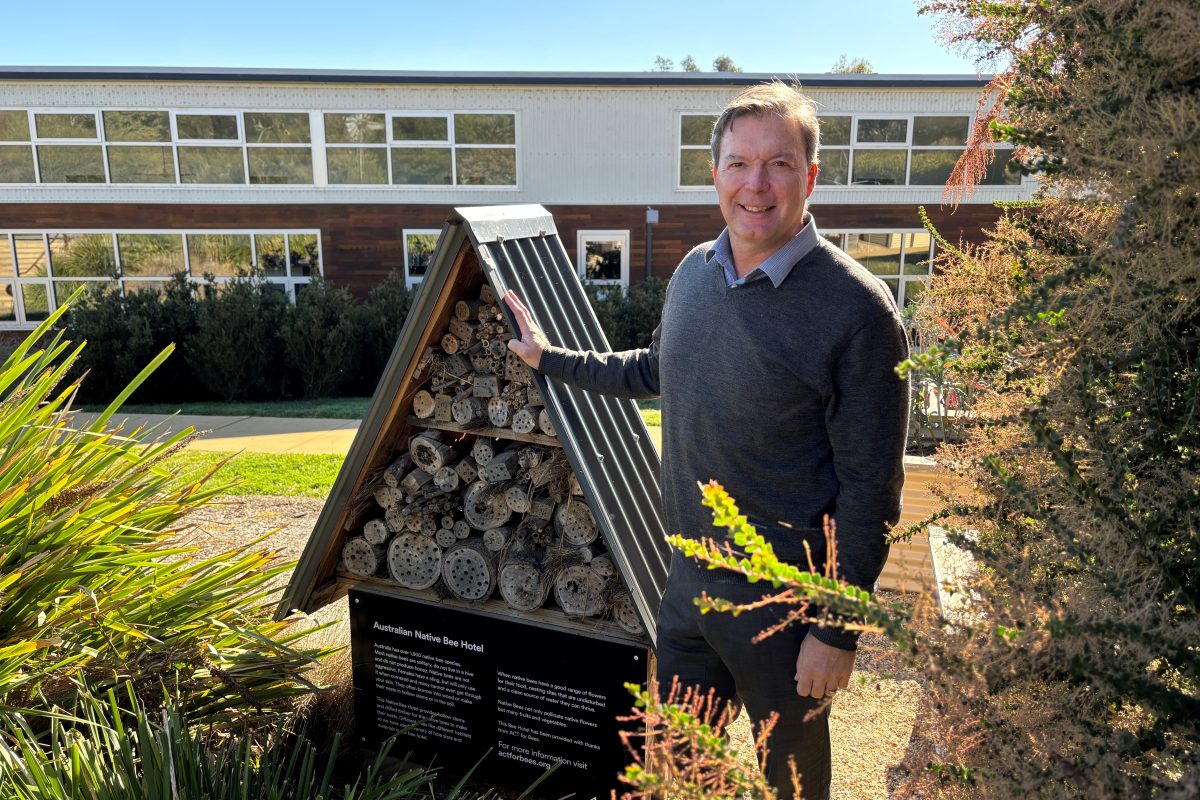Snake season means we need to chat with snake expert Dr Gavin Smith
Danger noodles, nope ropes or sneks.
Whatever you call them, the fact is, it’s that time of year when you are most likely to happen upon one of these slithery creatures as you wander around Canberra and the surrounding region.
Maybe there’s even one in your yard.
We talk to avowed snake-lover, and qualified snake handler Dr Gavin Smith about why we should learn more about, and pay greater respect to, our reptilian neighbours.
Gavin, you are a snake expert, but your day job is as an Associate Professor at the Australian National University where you are Head of the School of Sociology and Convenor, Environmental Studies Program.
“Yes, I grew up in Aberdeen, north-east of Scotland and made my way into academia unexpectedly after an attempt at a professional golf career didn’t quite get lift off!”
What first interested you in snakes? How did you come about combining a snake enterprise with academia? How do you fit it all in?
Snakes are the most amazing creature on the planet, being so finely tuned into the microphysics of the environment. They seem to encounter the world exclusively in the present and through their highly evolved senses, and perceive and use the environment in ways us humans don’t fully understand. They have an energy, wisdom and presence about them which I find fascinating.
I started to get really interested in snakes after a chance encounter with a red-belly black snake on a bushwalk. It slithered through my legs, with grace and purpose, while I was standing observing a kingfisher. It was a transformative moment for me and I owe that snake a debt of gratitude for the path it has opened up!
The best academic projects, in my opinion, are ones derived from a mix of intrigue, passion and compassion. I am tired of seeing snakes receive a bad rap and get heavily persecuted, and have decided to dedicate my work and career the past few years to better understanding how they came to be so problematised and how they operate biologically, behaviourally and ecologically. I am using this knowledge to represent them in alternative and nuanced ways.
The truth is that I struggle to fit it all in. I rely heavily on the finite patience of my family and colleagues for the multiple roles and works I perform. As a result of having to juggle lots of responsibilities, especially as they relate to snake rescues, education and research, I sometimes miss deadlines and lose important family time.
What qualifications did you need to get to handle snakes?
You need to do a professional snake handling course, be first aid certified, have insurance, acquire the correct equipment and then spend a few years as a novice building up your experience working with them, which can be both exhilarating and challenging. The eastern brown snake is a particularly difficult species to handle due to its athleticism, agility and lightning fast reflexes when optimally heated.
How do you feel about snakes and why are you not fearful?
I am committed to snakes having a better future in our shared environment and am very grateful to them for being such amazing educators: I feel there is a lot we can learn from snakes, especially with regard to how they respond to climatic fluctuation and make use of fragmenting habitats. They deserve to be respected as iconic and highly evolved figures in our local ecosystem.
I have observed them for long enough to understand a bit more about how they operate and how to be safe around them, and to recognise that there is so much misconception in popular understandings and depictions of snake biology and behaviour.
What are some general facts about snakes in and around the Canberra region?
Reptiles are ectothermic which means they depend on the environment to both warm up and cool down. In the Canberra region, we share a space with some dangerously venomous species, each of which have their own unique physiological and behavioural traits, and dare I say personalities – an area that my PhD student, Hannah Gerke, is researching. Each of these species are keen to avoid coming into conflict with you, but can actively defend themselves if they are feeling threatened or are provoked.
When and where are we most likely to see snakes?
Between September and October which is the peak mating period here, and then December and January when offspring generally hatch or are birthed. We usually have a busy phase around March to April when snakes are in the process of locating their overwintering burrows.
What should we do?
Learn more about snake behaviour by seeking information from reputable sources and following research based pages such as the Canberra Snake Tracking Project. If you see one, don’t panic. Remember, it belongs here and is not interested in having an adverse confrontation with you. They are timid and sensitive by nature and perceive you as a predator. Just leave the snake alone, get pets and children away from it, and give it requisite room. It is that simple.
Have you ever been bitten?
No. And have no plan on ever being bitten.
What is your advice for people living close to bush or more likely to come across a snake in their neighbourhood?
Become more familiar with these animals, learn about the role they play in our ecosystem and how their presence acts as an indicator of ecosystem health. Attend one of the many training courses I or others run, and learn ways of co-existing with snakes rather than always seeing them as problems to be expelled. And educate yourself in snake bite first aid procedures and have compression bandages available in the highly unlikely case of a bite incident occurring.
How do you snake-proof your yard?
It is not possible to do this, but you can take measures to make it less attractive for a visiting snake looking to inhabit for a short duration, by keeping yards tidy and free of rubbish and materials lying on the ground, keeping grass short and maintaining those areas of dense vegetation, and trying to reduce food sources like rodents by limiting food and nesting options for them – but ideally not using rodenticides which can then contaminate the wider food web and adversely impact the natural predators of mice and rats.
Trying to reduce access points to your property is also desirable, by sealing small gaps in doors and boundary fencing, and potentially putting rodent mesh around the perimeter by adjoining to fencing (as high as possible) and sinking the mesh into the ground by approximately 200mm.
But it is important to note that there is no magic solution to snake inhabitation, we have built on top of their home ranges and some have become urban-adapted, so we have to expect them around periodically and afford them some room.





